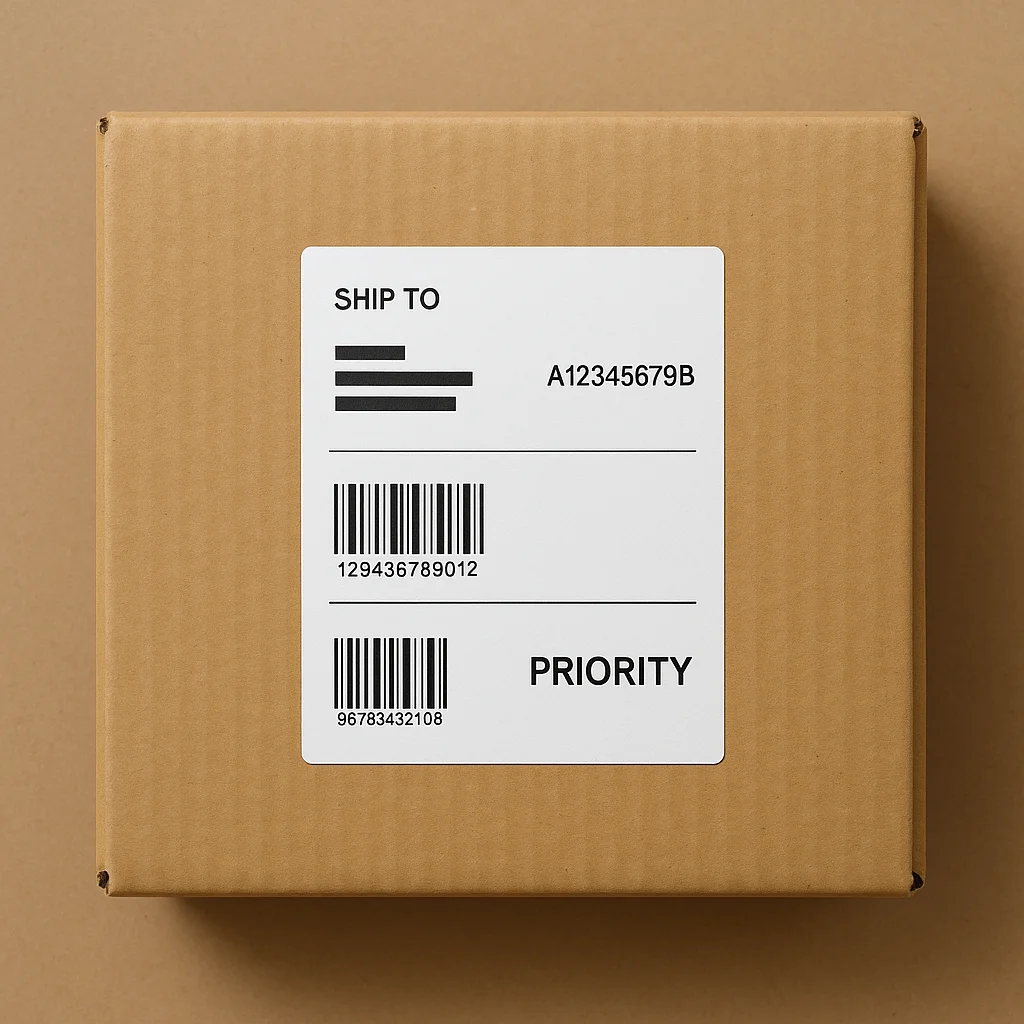Properly labeling and placing a shipping label on a box is a critical step in ensuring packages arrive safely, on time, and without unnecessary delays. Carriers like UPS, FedEx, DHL, USPS, and others have specific guidelines for label placement, orientation, and visibility. Mistakes in labeling can lead to misrouting, damage, or even the return of the package to the sender. This guide provides an in-depth look at everything you need to know about preparing, labeling, and affixing shipping labels to a box-covering best practices, carrier requirements, troubleshooting tips, and special considerations for domestic, international, and fragile shipments.
(more…)Category: Shipping Boxes
-

USPS Shipping: Labels, Supplies, Packaging, and Service Options
Key Takeaway: To ship efficiently with USPS-whether you need to know where to place labels, obtain free boxes, wrap parcels properly, understand prohibitions on mailing oneself, or decide between Ground Advantage and Priority Mail packaging-familiarity with USPS guidelines and available supplies is essential. This guide covers each topic in depth, ensuring packages are prepared correctly for timely, cost-effective delivery.
(more…) -
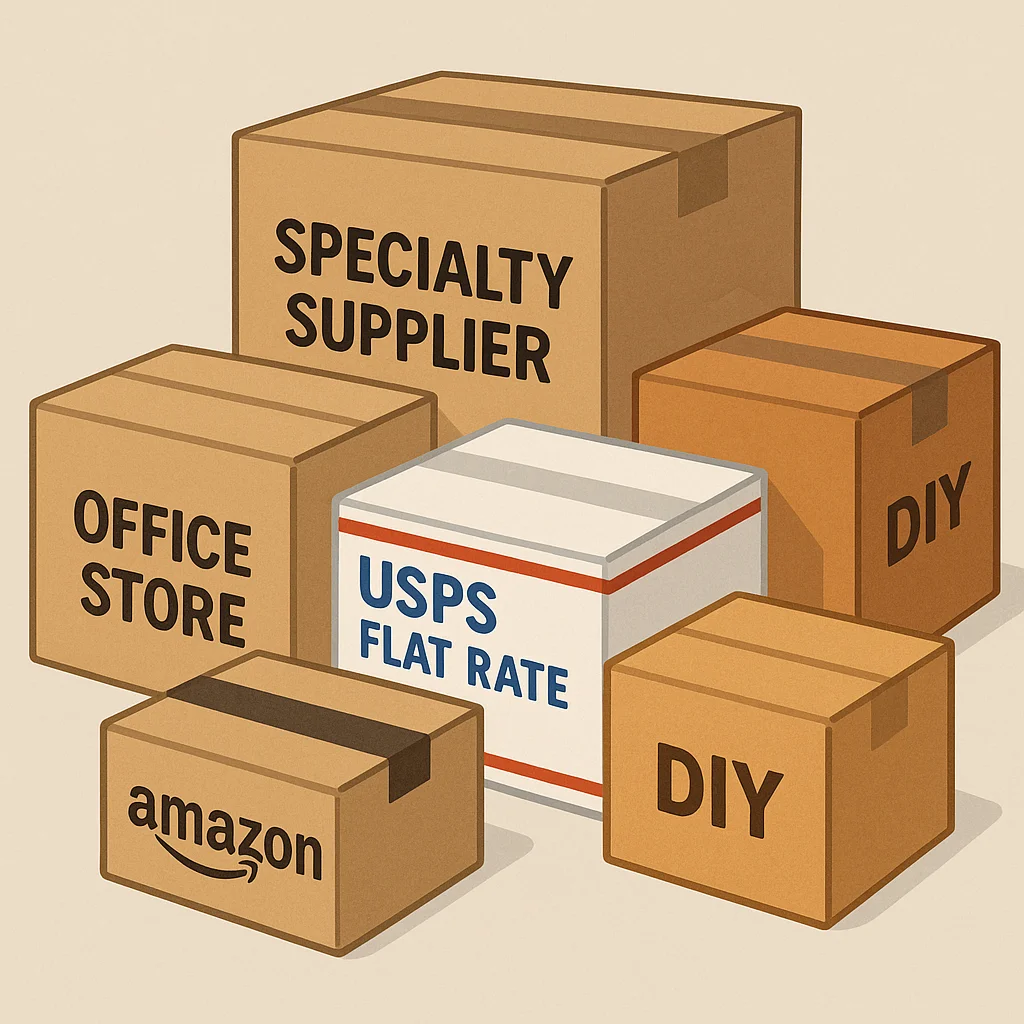
Where to Buy Small Shipping Boxes
When shipping items-whether you run a small online business, send gifts to loved ones, or move personal belongings-finding the right small shipping boxes is essential. The correct boxes protect contents, optimize postage costs, and enhance presentation. This guide explores every avenue for sourcing small shipping boxes, covering major online retailers, brick-and-mortar stores, specialty packaging suppliers, and creative DIY options. Each section provides detailed insights, pricing considerations, and tips to help you select the best option for your needs.
(more…) -
Comprehensive Guide: Where to Buy Shipping Boxes for Golf Clubs
Comprehensive Guide: Where to Buy Shipping Boxes for Golf Clubs
When it comes to transporting golf clubs safely-whether you’re traveling for a tournament, sending your clubs to a friend, or returning them for repair-the right shipping box is essential. Golf clubs are long, awkwardly shaped, and often expensive, making protection from bending, crushing, and moisture critical. This guide covers all the major avenues for purchasing golf club shipping boxes, including ready-to-ship options, custom solutions, and cost-saving strategies.
(more…) -
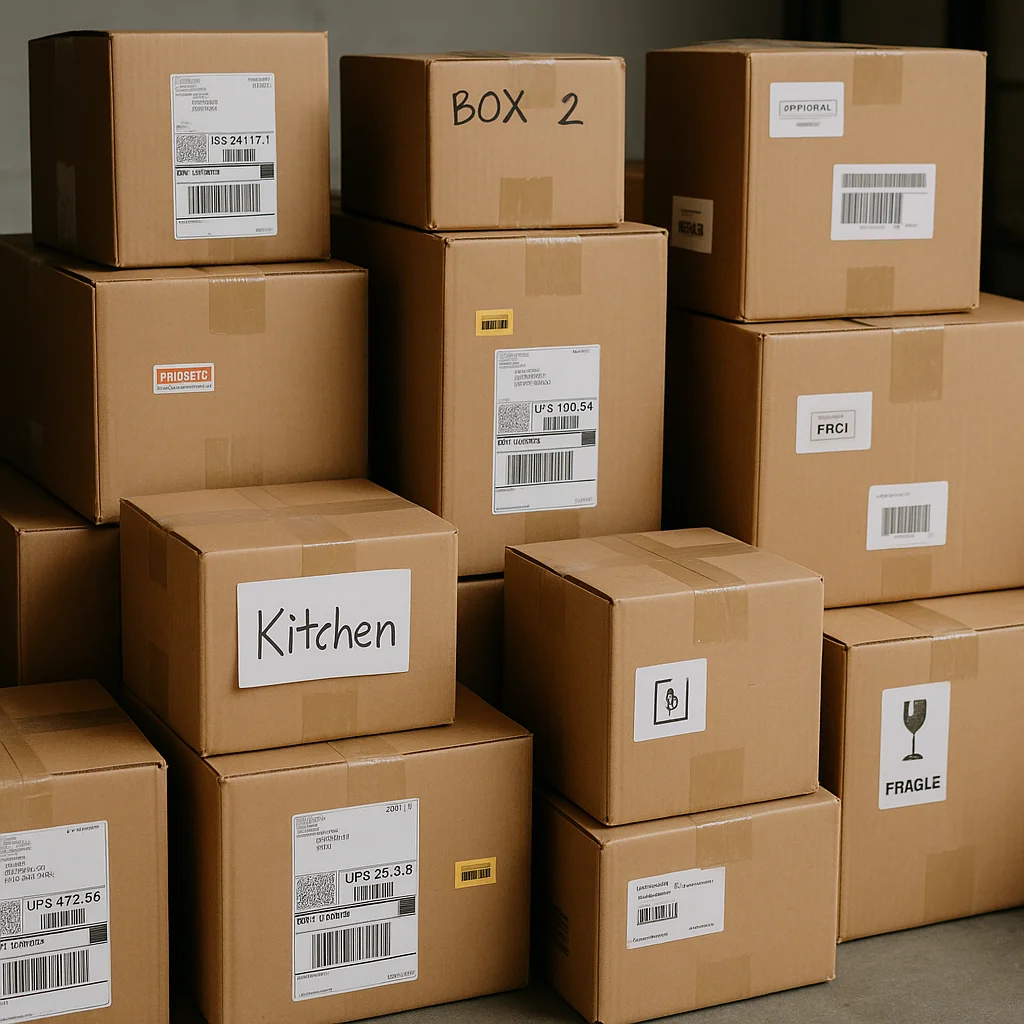
Where to Buy Shipping Boxes
Whether you’re preparing to send a single package or stocking up for a growing ecommerce business, finding reliable sources for shipping boxes is essential. This guide explores every major avenue-online and brick-and-mortar retailers, specialty packaging suppliers, wholesale distributors, and more-so you can select the best option for your budget, volume requirements, and delivery timeline.
(more…) -
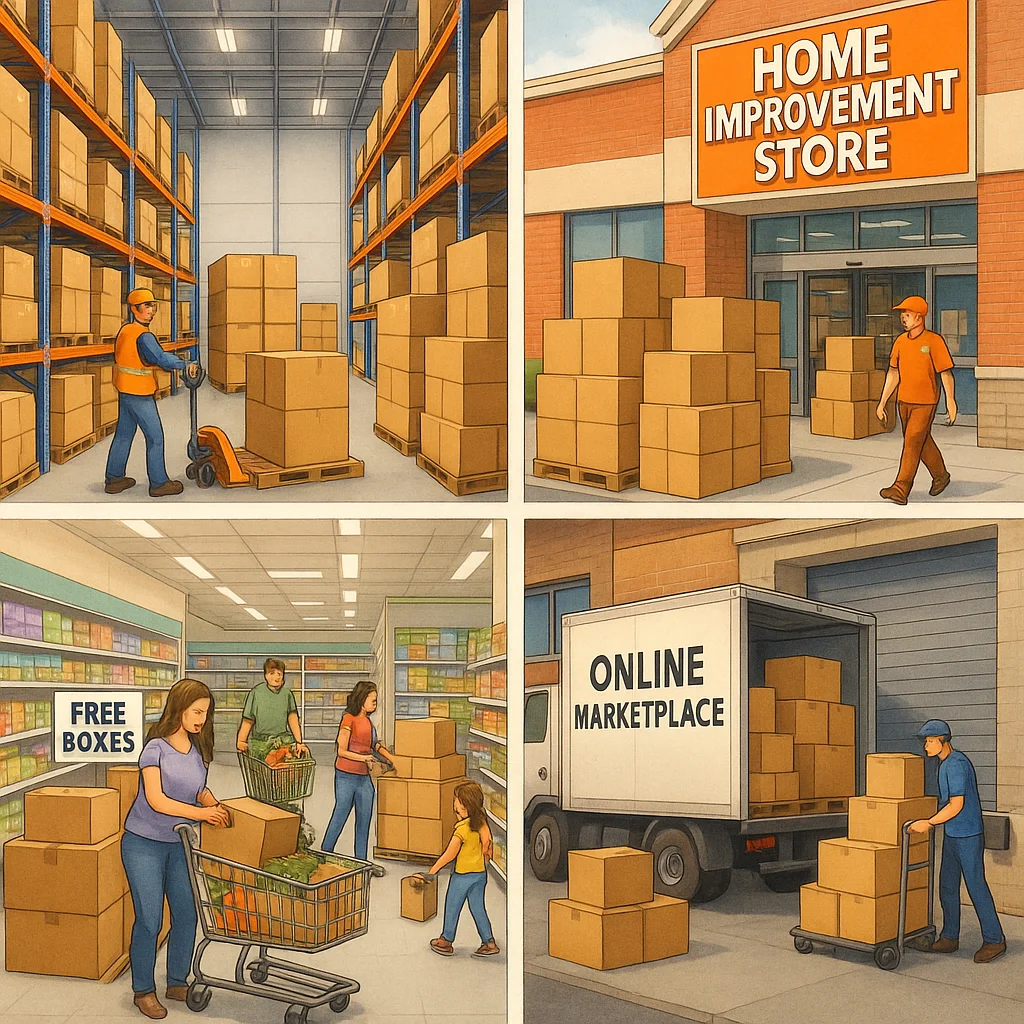
Buying Large Shipping Boxes
Whether you’re moving household goods, sending bulky merchandise to customers, or storing seasonal items, finding reliable sources for large shipping boxes is essential. This guide explores every avenue-from brick-and-mortar retailers and packaging wholesalers to online marketplaces, free options, and do-it-yourself solutions-to help you locate the perfect oversized box for your needs.
(more…) -
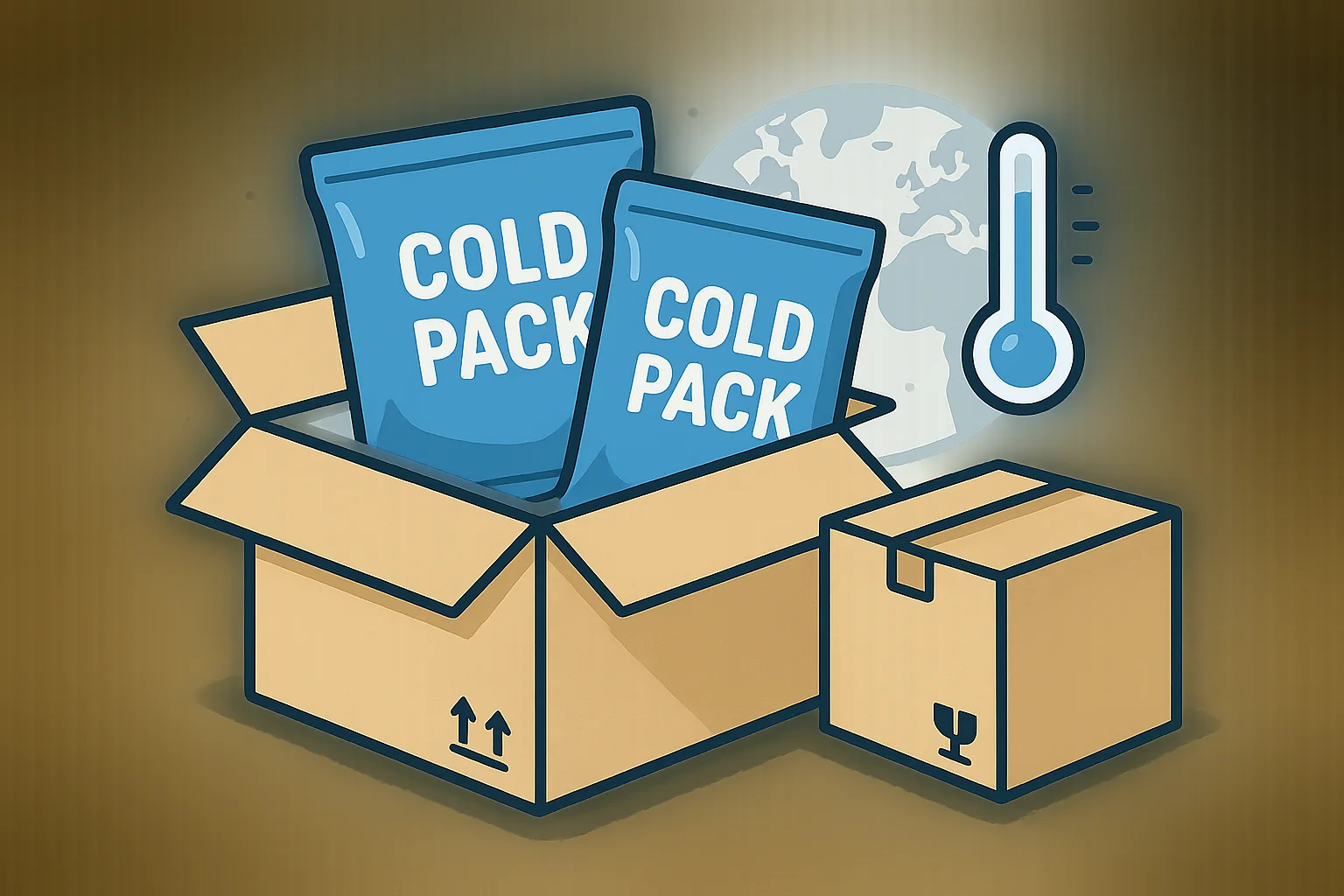
Best Places to Buy Insulated Shipping Boxes
When shipping temperature-sensitive products-such as perishable foods, pharmaceuticals, biological samples, or specialty chemicals-maintaining a controlled temperature throughout transit is critical. Insulated shipping boxes (also called thermal shipping boxes or temperature-controlled packaging) help protect product integrity by slowing heat transfer between the box interior and the external environment. Choosing the right provider is just as important as selecting the right box type: you want a reputable supplier, fast shipping, competitive pricing, technical support, and a broad selection of products. This guide explores the top sources to purchase insulated shipping boxes, evaluates their offerings, and provides practical tips to help you make an informed choice.
(more…) -
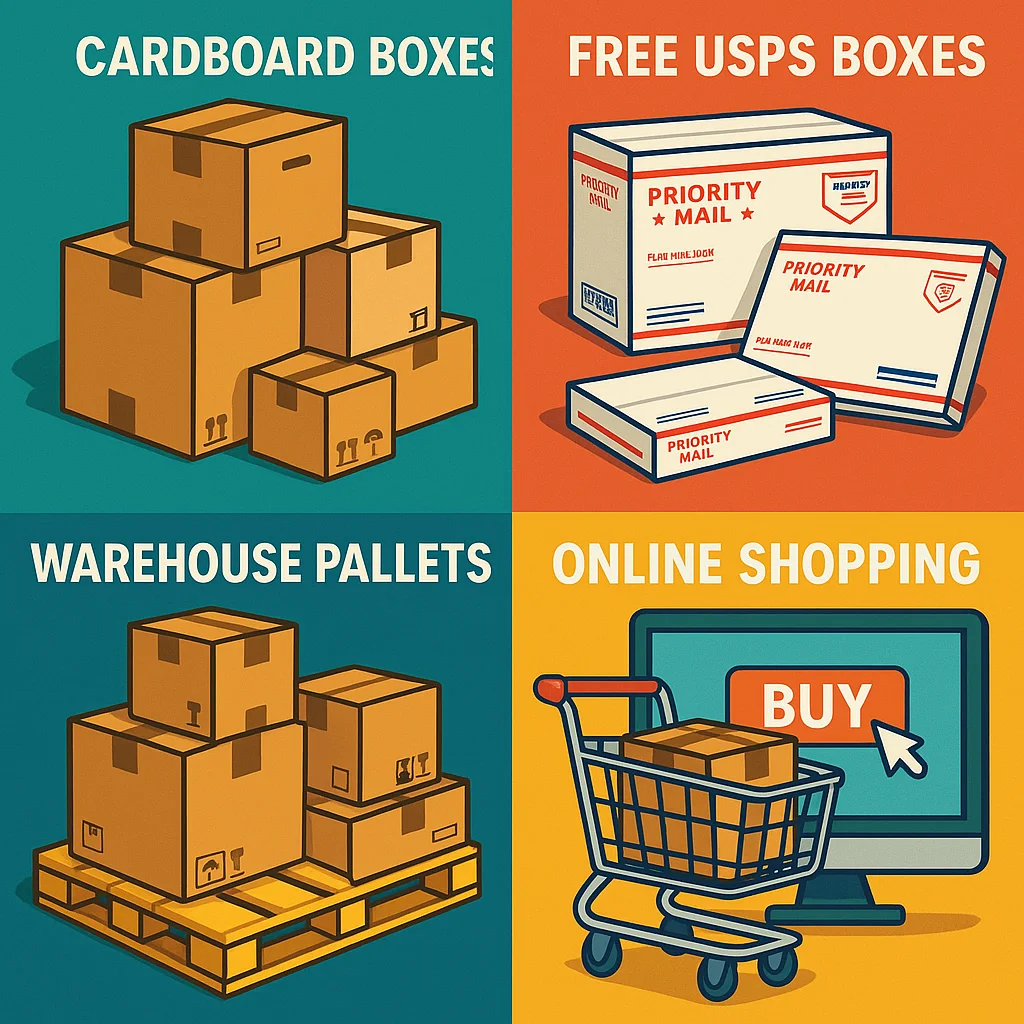
Where to Buy Cheap Shipping Boxes
Main Takeaway: For businesses and individuals seeking to minimize packaging costs, the most affordable shipping boxes can be sourced through a combination of online retailers, wholesale suppliers, free carrier-provided boxes, local retail and recycling outlets, and peer-to-peer marketplaces. By strategically mixing these options and planning ahead, you can drastically reduce or even eliminate your box expenditures.
1. Free Boxes from Major Carriers
Shipping carriers often provide free packaging supplies-particularly attractive for low-volume shippers and small businesses.
1.1 United States Postal Service (USPS)
- Flat Rate Priority Mail: The USPS offers a wide selection of flat-rate boxes and envelopes at no cost, including small, medium, large, and regional-rate options. These can be ordered online and delivered to your door within days, or picked up at Post Offices.
- Specialty Boxes: Military care packages, DVD boxes, and other specialty formats are also available free of charge, making USPS the most expansive free-supplies provider among carriers.
1.2 UPS
- Express Boxes and Tubes: UPS supplies free Express Boxes in small, medium, and large sizes, as well as document tubes. A UPS account grants online ordering and curbside pickup at UPS Stores.
- Express Envelopes and HAZMAT Supplies: Alongside boxes, UPS will ship free express envelopes and specialized hazardous-material packaging if you meet minimum order quantities.
1.3 FedEx
- FedEx Boxes and Envelopes: FedEx offers free small, medium, and large corrugated boxes, as well as FedEx Tubes for posters or blueprints. Envelopes and padded mailers are also complimentary when using FedEx shipping services.
- Ordering: Free supplies can be requested online or picked up at FedEx Office locations.
1.4 DHL and Other International Carriers
- DHL provides free envelopes and select boxes for international shipping. Availability varies by region and service level.
Key Tip: Always plan delivery services to align with the free supplies you request. For instance, only Priority Mail shipments can use USPS flat-rate boxes, and UPS Express Boxes require Express service.
2. Online Retailers and Marketplaces
When free supplies aren’t practical-such as for non-flat-rate dimensions or branding needs-online retailers offer competitive prices and bulk discounts.
2.1 Amazon
- Wide Selection: Over 10,000 “shipping box” listings, ranging from single units under $1 to bulk bundles. Amazon Prime members often receive free two-day shipping on packaging supplies.
- Pricing: Single boxes start at roughly $0.50 apiece; bulk packs of 50+ can drop unit costs below $0.30.
2.2 Walmart
- In-Store & Online: Pen+Gear and General Supply brands sell bundles of 25–100 boxes. Prices range from $0.83 for medium boxes to around $1.08 for large sizes, with free in-store pickup available for many items.
2.3 Uline
- Extensive Catalog: Over 1,700 corrugated box options. Unit pricing begins at approximately $0.25 for small sizes when purchased in bulk. Free same-day shipping if ordered before 6 pm from one of 14 distribution centers nationwide.
2.4 PackagingSupplies.com
- Corrugated Boxes & Cartons: Wholesale options across 1,000+ sizes. Tiered pricing offers discounts up to 50% when ordering cases of 20 or more boxes.
2.5 Paper Mart
- Specialty & Gift Boxes: Wholesale packaging boxes in custom colors and finishes. Bulk pricing can reduce costs by 30–40% compared to retail.
3. Wholesale Suppliers
For high-volume packagers, wholesalers deliver the best per-unit pricing:
- WebstaurantStore: Case pricing as low as $9.87 per case for value boxes, with incremental discounts at higher quantities. Multiple size options support restaurants, retailers, and e-commerce businesses.
- The Boxery: Offers 20%+ lower prices than competitors on corrugated boxes, with fast shipping and a shipping-cost calculator to estimate total order expense.
- Kite Packaging (UK): Bulk mixed pallets or custom-sized boxes, with free delivery on orders over £45. Mixed pallets allow combining sizes to optimize usage and reduce waste.
4. Local and Recycled Sources
Acquiring used or donated boxes can eliminate costs entirely, provided the boxes remain sturdy and clean.
4.1 Retailers and Grocery Stores
- Grocery Produce Departments: Produce boxes are strong, clean, and free. Ask managers for pickup schedules to collect surplus cardboard.
- Liquor Stores and Home Improvement Retailers: Boxes from liquor and hardware deliveries are often high-grade corrugated and discarded after unpacking.
4.2 Moving and Storage Companies
- U-Haul: Many U-Haul outlets offer recycled moving and shipping boxes at greatly reduced prices or free from their drop-off sections.
- Moving Services Rebates: Platforms like UBoxes bundle moving-supply purchases with service partner rebates, effectively refunding box costs when booking moving or storage services.
4.3 Community and Online Exchange
- Freecycle, Nextdoor, Facebook Marketplace: Local groups frequently list free moving boxes. Monitoring daily posts or setting up requests ensures a steady supply.
- Reddit Threads: Communities such as r/Flipping and r/EtsySellers share tips on where to source used and low-cost boxes in bulk.
5. Brick-and-Mortar Office Supply Stores
Shopping in person can save shipping fees for small to mid-size orders.
- Staples: Regular in-store promotions on moving and shipping kits, with multipacks of small boxes priced near $0.75 each.
- Office Depot/OfficeMax: Often runs bulk-purchase discounts when buying 10+ units, and students or business loyalty members can access additional savings.
- Target: Carries Pen+Gear and Up&Up brands of packing boxes and mailers at competitive price points, especially during back-to-school sales.
6. Tips for Maximizing Savings
- Consolidate Orders: Combine multiple size requirements in a single bulk purchase to reach minimum order thresholds for wholesale pricing.
- Match Box to Item Size: Avoid dimensional-weight surcharges by choosing the smallest box that safely accommodates your product.
- Reuse Internally: Store incoming shipments and reuse those boxes for outbound orders.
- Plan Ahead: Order carrier-provided boxes well before sale peaks (e.g., holiday season) to avoid stockouts and expedite shipping.
- Negotiate with Suppliers: If you regularly purchase large volumes, ask for tiered pricing or contractual discounts.
- Consider Eco-Options: Some recycled-content boxes can be priced lower than virgin corrugated.
7. Summary Table of Key Sources
Conclusion: By leveraging free carrier-provided boxes, combining online wholesale purchases, and tapping local recycled sources, you can secure shipping boxes at minimal to zero cost. A strategic mix of these channels, paired with sound planning and reuse practices, ensures you never overpay for packaging again.
Source Category Examples Unit Cost Range Notes Free Carrier Supplies USPS, UPS, FedEx $0 Must ship via specific services to qualify Online Retailers Amazon, Walmart, Uline $0.25–$1.50 Bulk discounts at 20+ units; Prime/free pickup options Wholesale Suppliers WebstaurantStore, PackagingSupplies.com $0.10–$0.50 per box Tiered pricing; low as $9.87 per case Local/Recycled Grocery stores, U-Haul, Freecycle Free–$0.10 Quality varies; inspect for sturdiness Brick-and-Mortar Office Stores Staples, Target, Office Depot $0.75–$1.50 In-store promotions, loyalty discounts
-
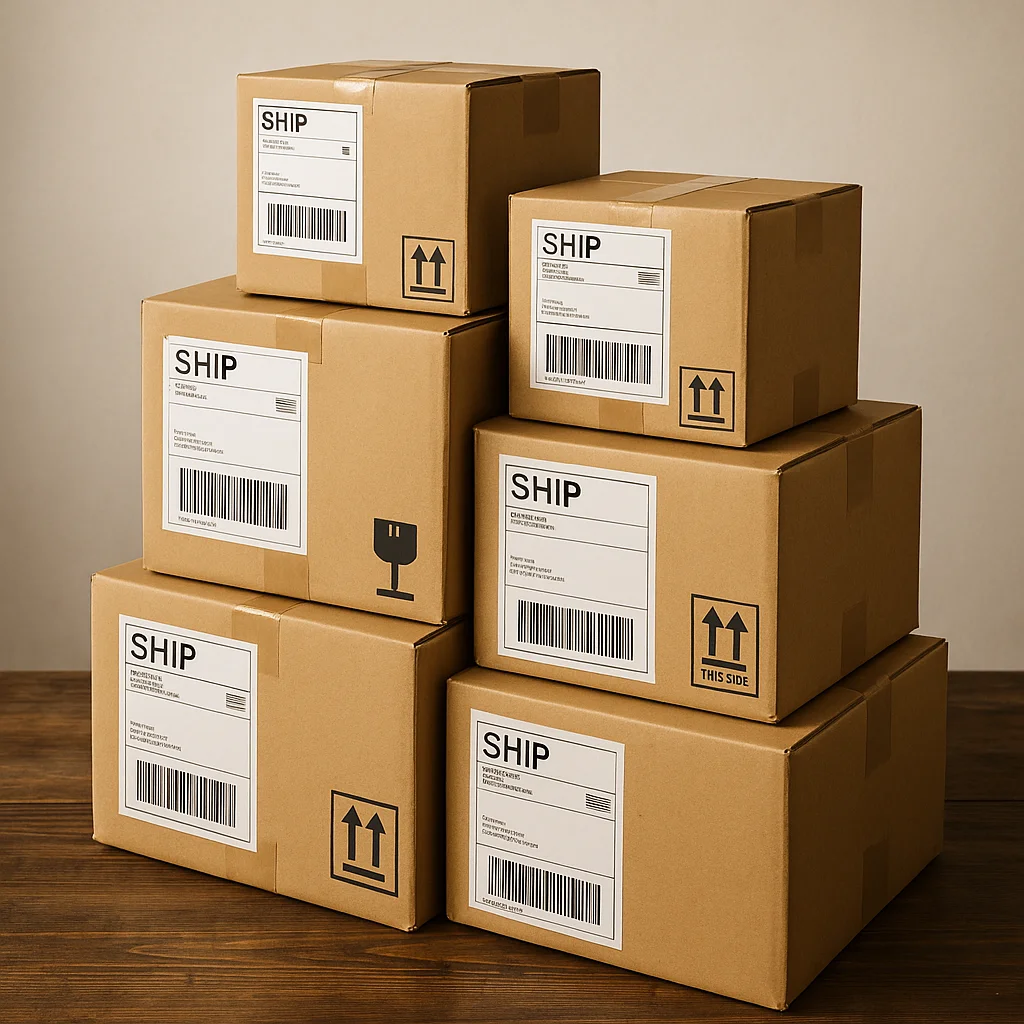
Where to Buy Boxes for Shipping
When it comes to sending items safely and securely, the right box is critical. Whether you’re an individual shipping gifts or a business fulfilling orders, understanding where to buy shipping boxes can save you time, money, and headaches. This comprehensive guide explores every conceivable source-online and brick-and-mortar-along with tips for selecting the perfect container, cost-saving strategies, and eco-friendly alternatives.
(more…) -
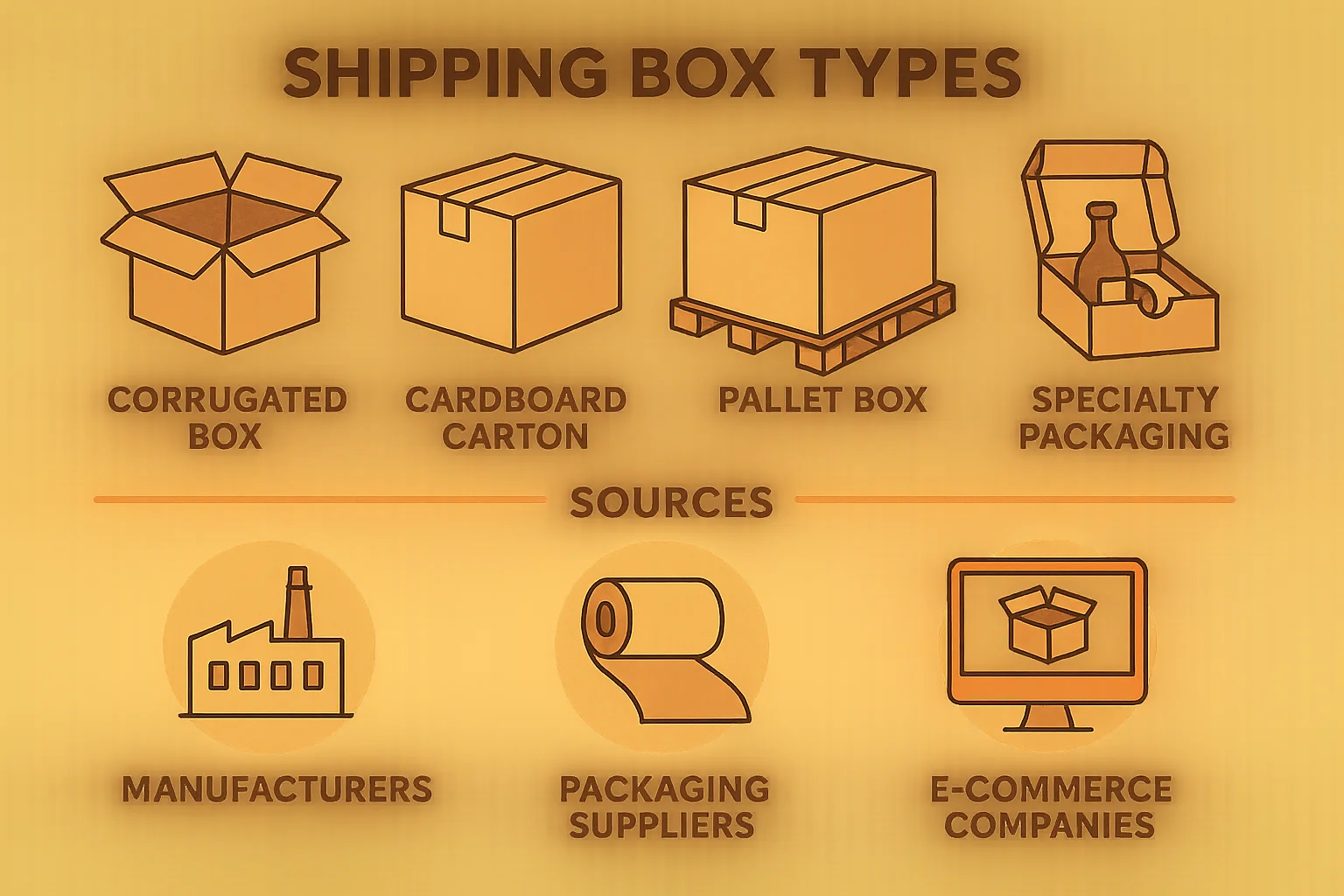
Where to Get and Buy Shipping Boxes
When it comes to shipping items-whether you’re running an e-commerce business, sending a gift, or relocating household goods-the first question is always the same: Where can I get reliable, appropriately sized shipping boxes? Below is an in-depth exploration of every avenue for acquiring shipping boxes-from free and recycled options to brand-new, specialty, and custom packaging solutions-so you can choose the best source for your needs, budget, and timeline.
(more…) -
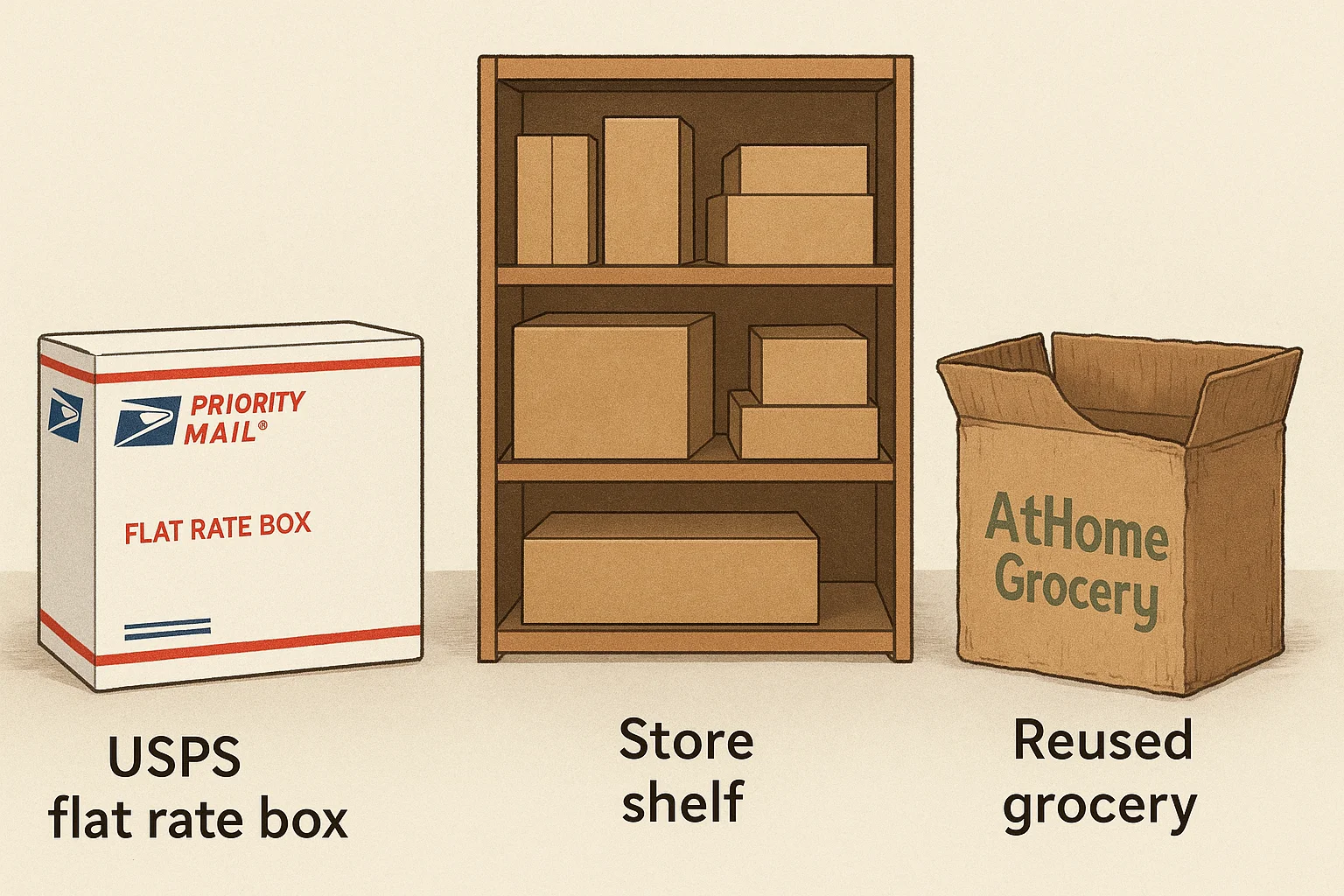
Finding the Right Box for Shipping
When preparing to ship an item, one of the most fundamental considerations is choosing the right box. The box you select not only protects your shipment during transit but also influences shipping costs, handling, and the overall customer experience. This guide explores every avenue for obtaining shipping boxes-ranging from free or low-cost options to premium custom packaging-so you can find the perfect solution for your needs.
(more…) -
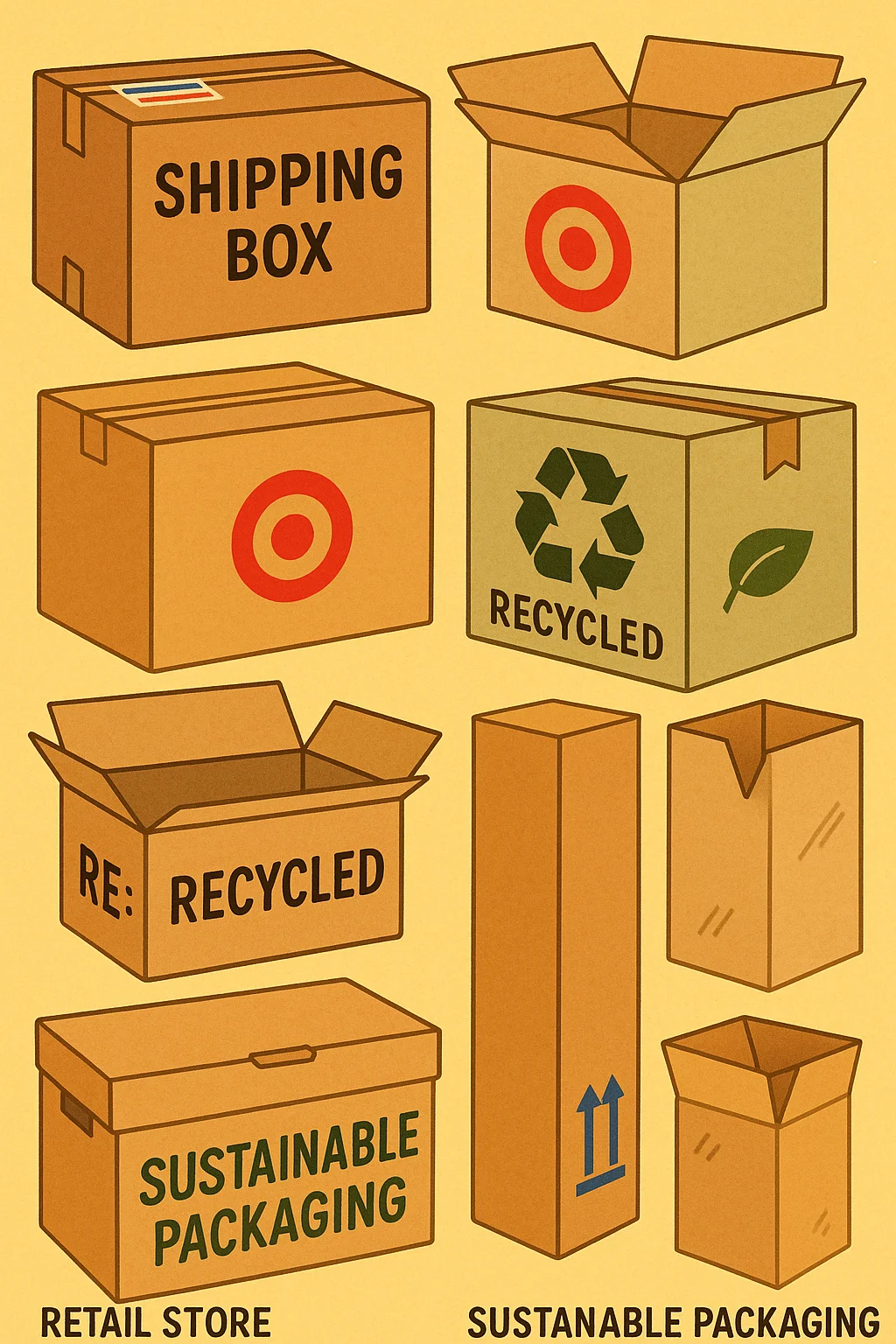
Finding and Acquiring Shipping Boxes
Whether you’re running an e-commerce operation, preparing for a move, sending a care package to a friend, or simply organizing household items, shipping boxes are essential. This guide explores every practical avenue-retailers, online suppliers, recycled sources, specialty stores, and community resources-so you can find the right box at the right price.
(more…) -

Where to Buy Single Shipping Boxes
When you need a single shipping box-whether for mailing a gift, returning an item, or simply storing belongings-finding a retailer that sells individual boxes rather than bulk packs can save both money and waste. Below is an in-depth exploration of the best sources for purchasing single shipping boxes, covering brick-and-mortar stores, online retailers, specialty suppliers, marketplaces, and even creative alternatives. Each option is assessed in terms of convenience, cost, selection, and environmental impact to help you choose the solution that best fits your needs.
(more…) -
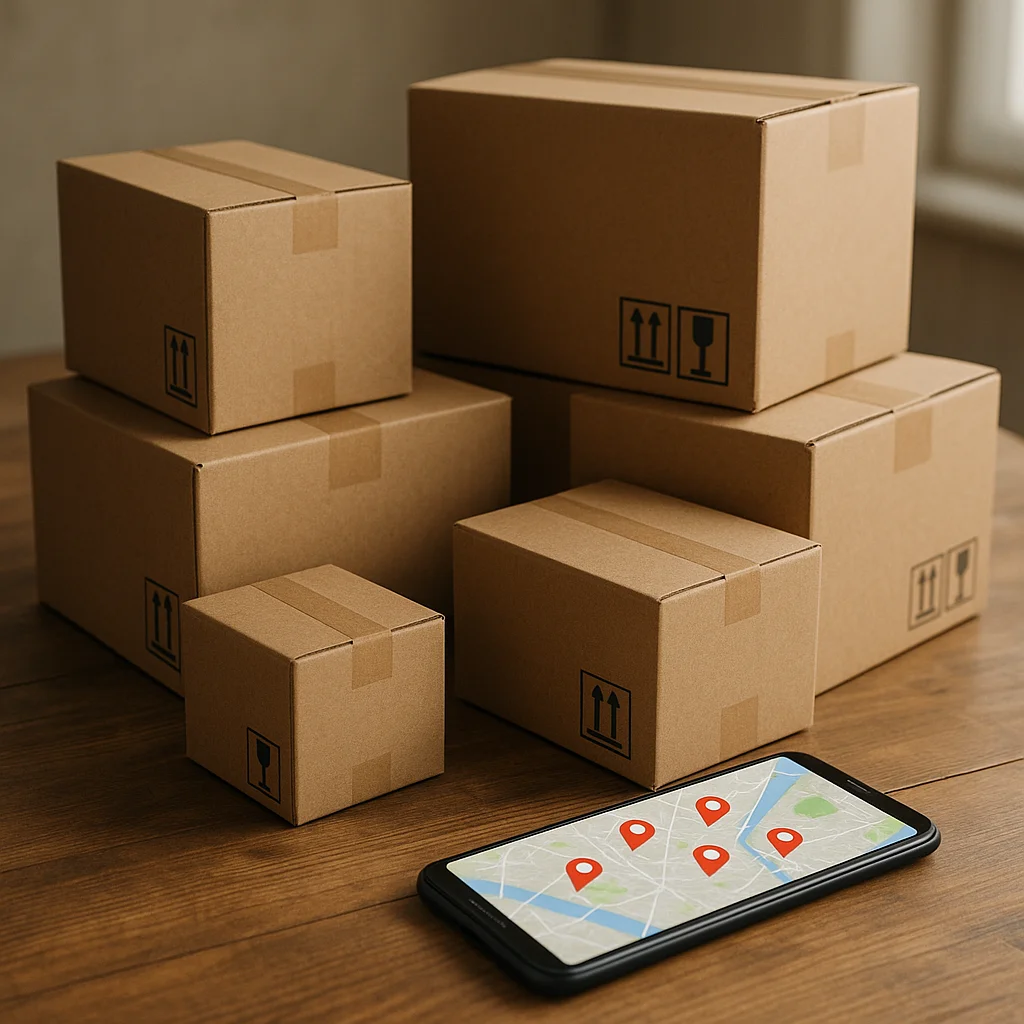
Finding and Purchasing Shipping Boxes Near You
When you need sturdy, reliable boxes for packing and shipping items-whether for moving, online sales, or sending gifts-the most important first step is knowing where to look. This guide provides an in-depth overview of all the local and near-me options for buying shipping boxes, the types and sizes available, cost considerations, environmental factors, and tips for getting the best value. With this information, you’ll be able to locate the perfect boxes for your needs quickly and efficiently.
(more…) -
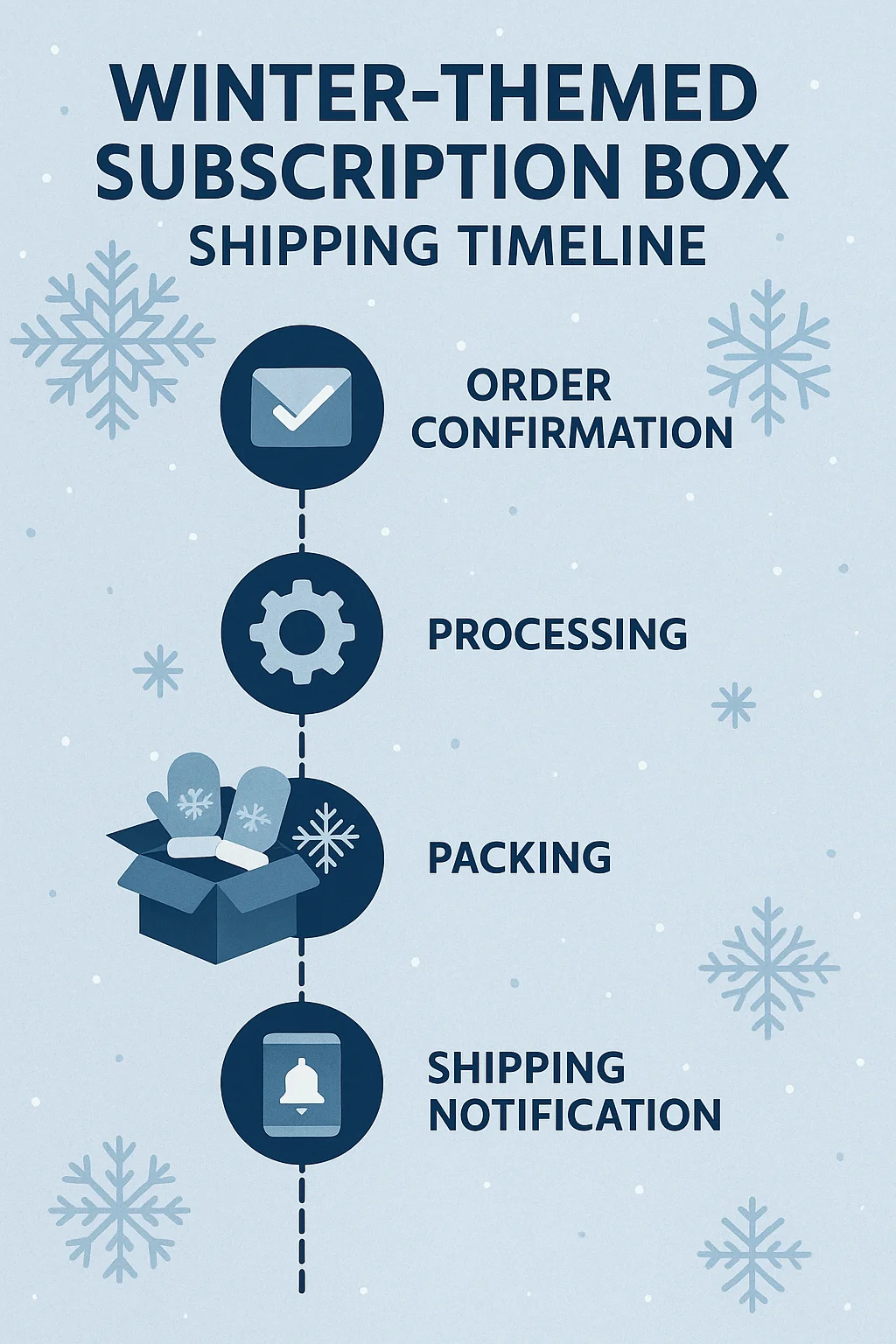
Winter FabFitFun Box Shipping Schedule
Main Takeaway: FabFitFun Winter boxes ship within one month of billing. Annual members’ Winter boxes are billed on October 31 and begin shipping thereafter, while Seasonal members’ Winter boxes are billed on November 13 and begin shipping thereafter. Delivery time depends on destination: U.S. domestic shipments typically take 7–10 business days in transit, while Alaska, Hawaii, Puerto Rico, Canada, and the U.K. may take 9–14 business days once the box leaves the warehouse.
(more…) -
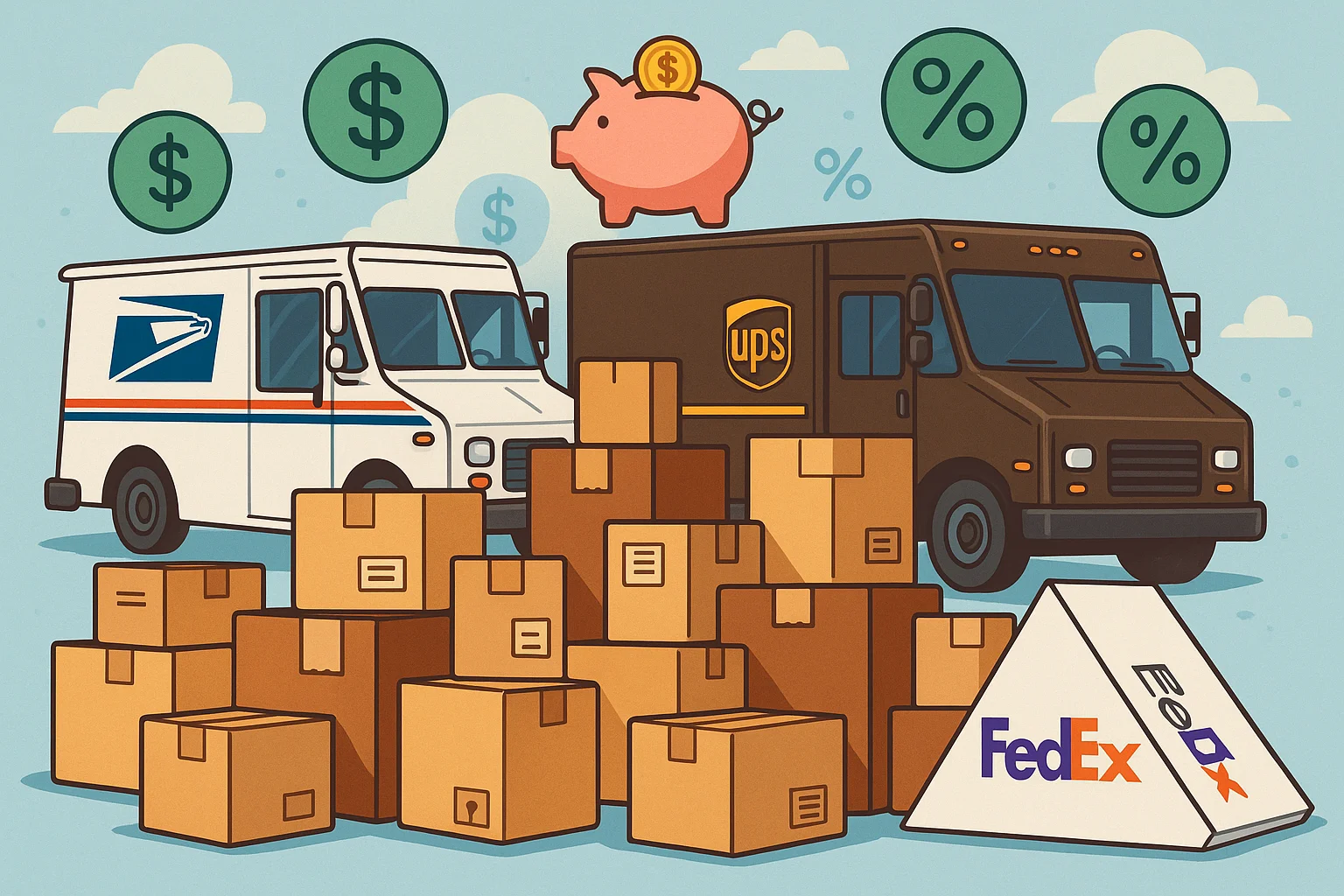
Cheapest Ways to Ship Boxes: Strategies for Heavy, Large, and Standard Shipments
When it comes to shipping boxes-whether heavy, oversized, or standard-the cost can quickly escalate without careful planning. The main takeaway is that leveraging the right carrier, packaging strategy, and shipping service can dramatically reduce costs. Below is a detailed guide exploring proven methods, cost-saving tactics, and best practices to ship any box as cheaply as possible, organized by theme and shipping scenario.
(more…) -

Cheapest Size Box and Small Box Shipping Costs
Key Takeaway: For most small shipments, the USPS Ground Advantage service for lightweight parcels offers the lowest shipping rates-starting at $5.25 for packages up to 4 oz sent within Zone 1. Among flat‐rate box options, UPS Simple Rate’s extra‐small box at $9.45 is the most economical, followed by the USPS Small Flat Rate Box at $10.65, and FedEx One Rate Small Box at $15.10.
(more…) -
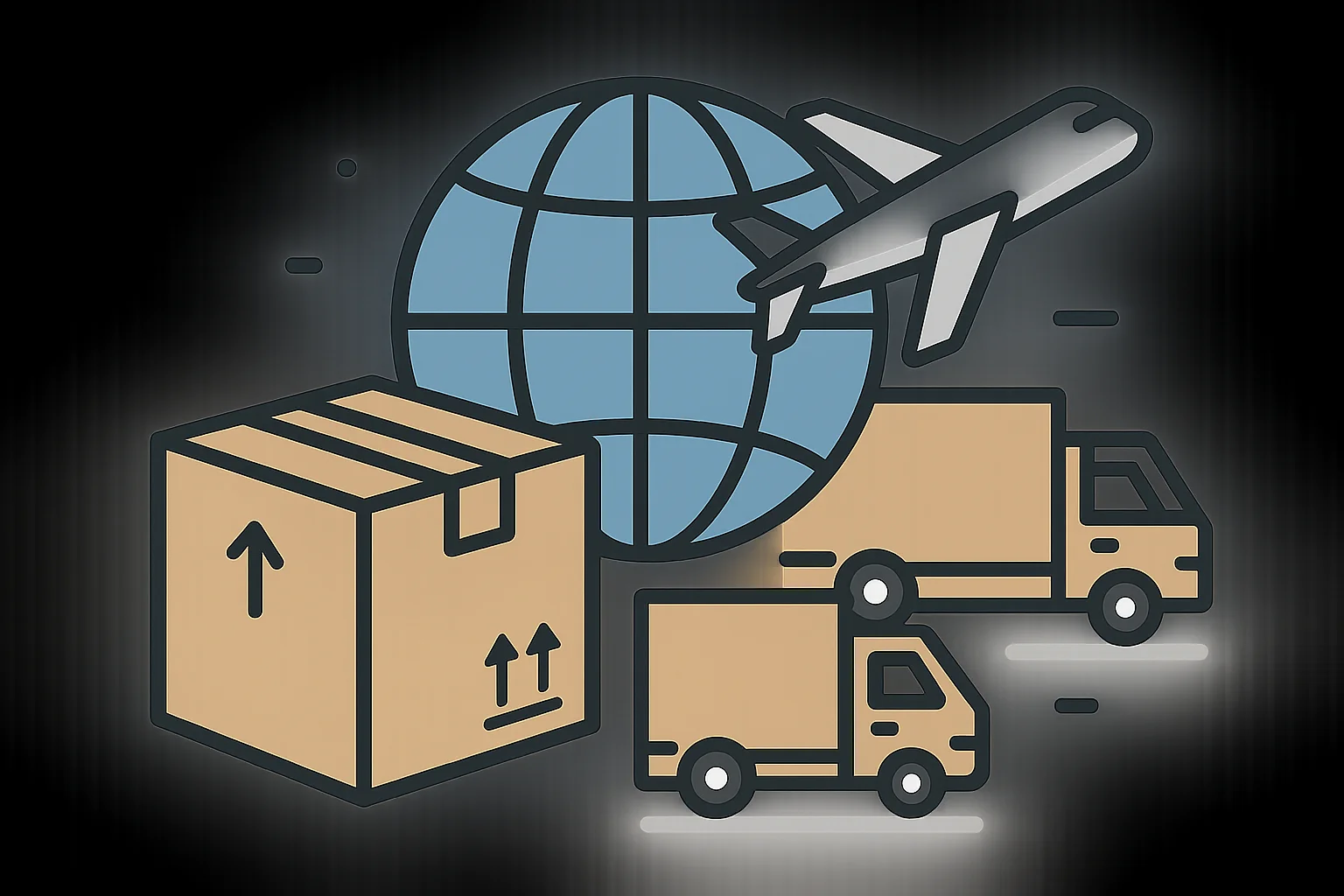
Comprehensive Guide to Shipping Boxes Overseas
Shipping boxes internationally involves a series of critical steps, from selecting the right carrier to completing customs forms. Proper planning and execution can help you avoid delays, unexpected fees, and lost shipments. This guide breaks down the process into detailed stages: preparing your shipment, choosing a carrier, handling customs and documentation, understanding costs and insurance, tracking and delivery, and tips to ensure a smooth experience.
(more…) -
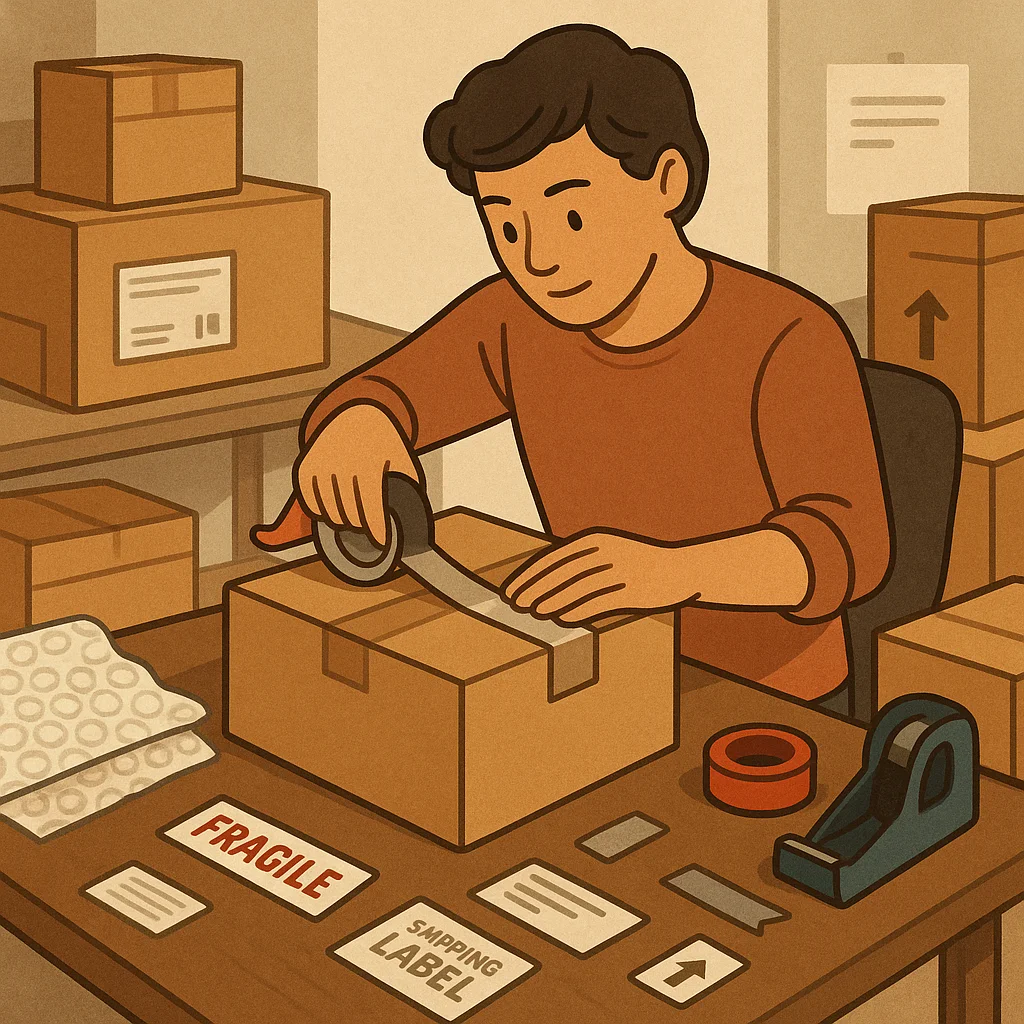
Comprehensive Guide to Shipping Boxes
Comprehensive Guide to Shipping Boxes
Key Takeaway: Properly shipping a box involves selecting the right packaging materials, following systematic packing steps, correctly labeling and documenting the shipment, and choosing an appropriate carrier. Attention to detail at each stage ensures your package arrives safely, on time, and cost-effectively.
(more…) -
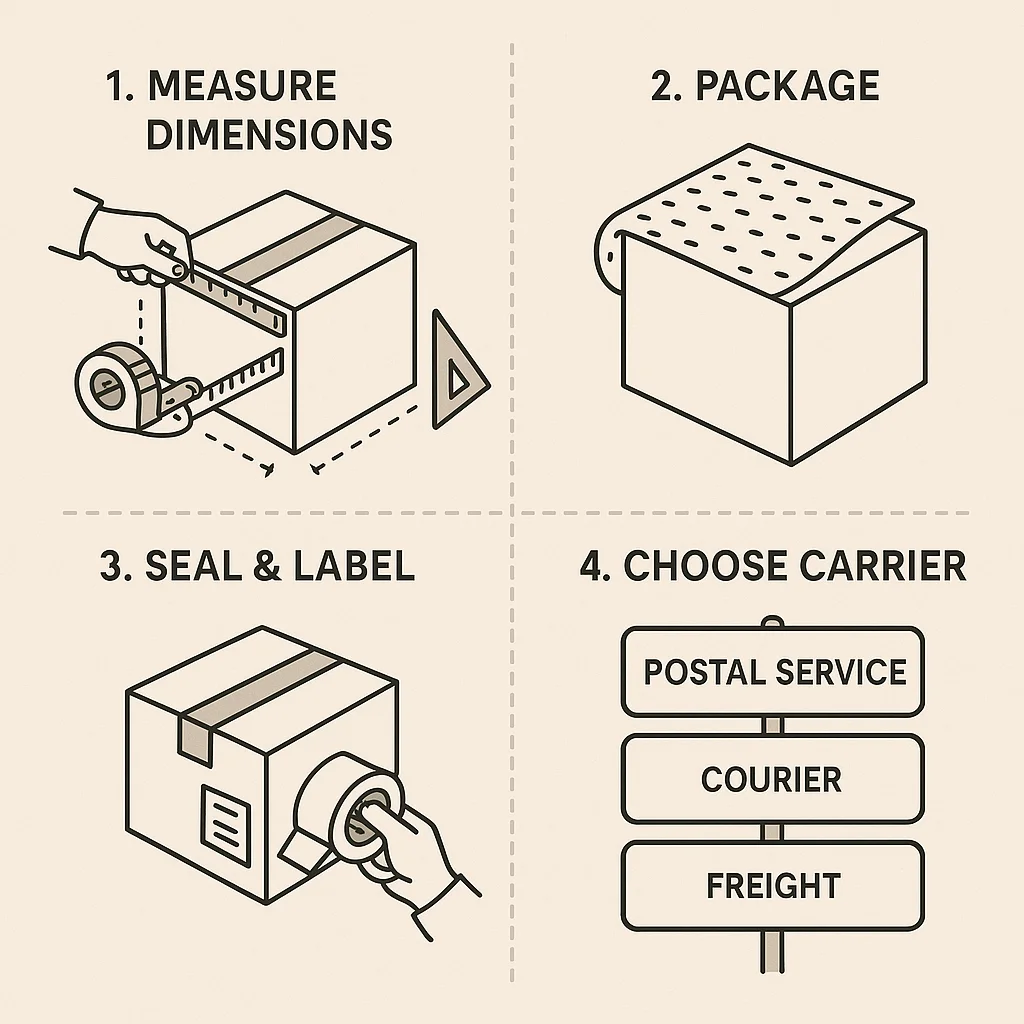
Shipping Large Boxes and Oversized Items
Shipping large boxes or oversized items can be particularly challenging due to size and weight restrictions, special handling requirements, and potentially higher costs. Whether you’re moving bulky personal items, sending a large gift, or shipping products for business, this guide explains everything you need to know-from choosing appropriate packaging to selecting the right carrier and reducing costs-so you can ship large boxes and items safely, securely, and affordably.
(more…) -
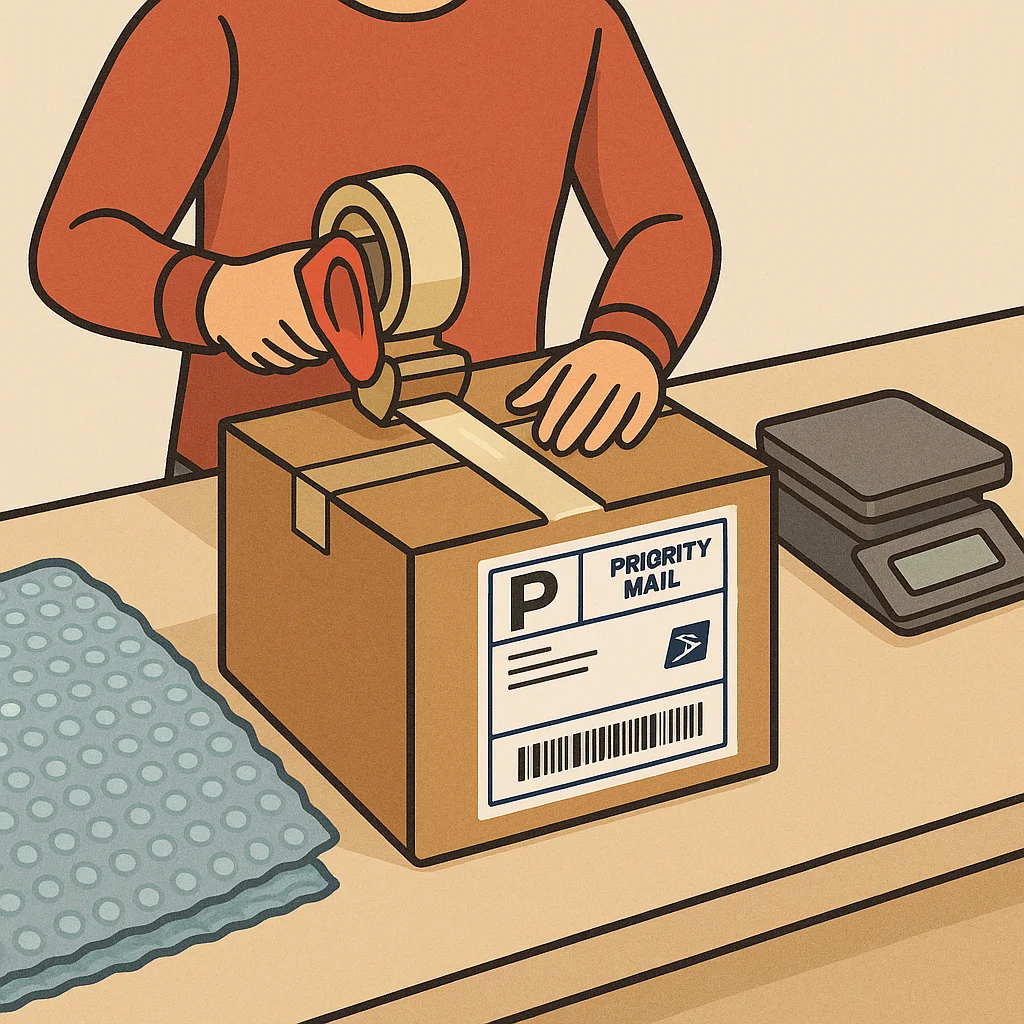
Shipping a Box with USPS
Shipping a box through the United States Postal Service (USPS) is a straightforward, cost-effective way to send items both domestically and internationally. By following a few essential steps-selecting the right service, preparing and packaging your shipment properly, affixing accurate postage and labels, and choosing a convenient drop-off or pickup option-you can ensure that your package arrives safely and on time. This guide provides an in-depth, step-by-step walkthrough, expert tips, and answers to common questions to help you confidently navigate the entire USPS box-shipping process.
(more…) -
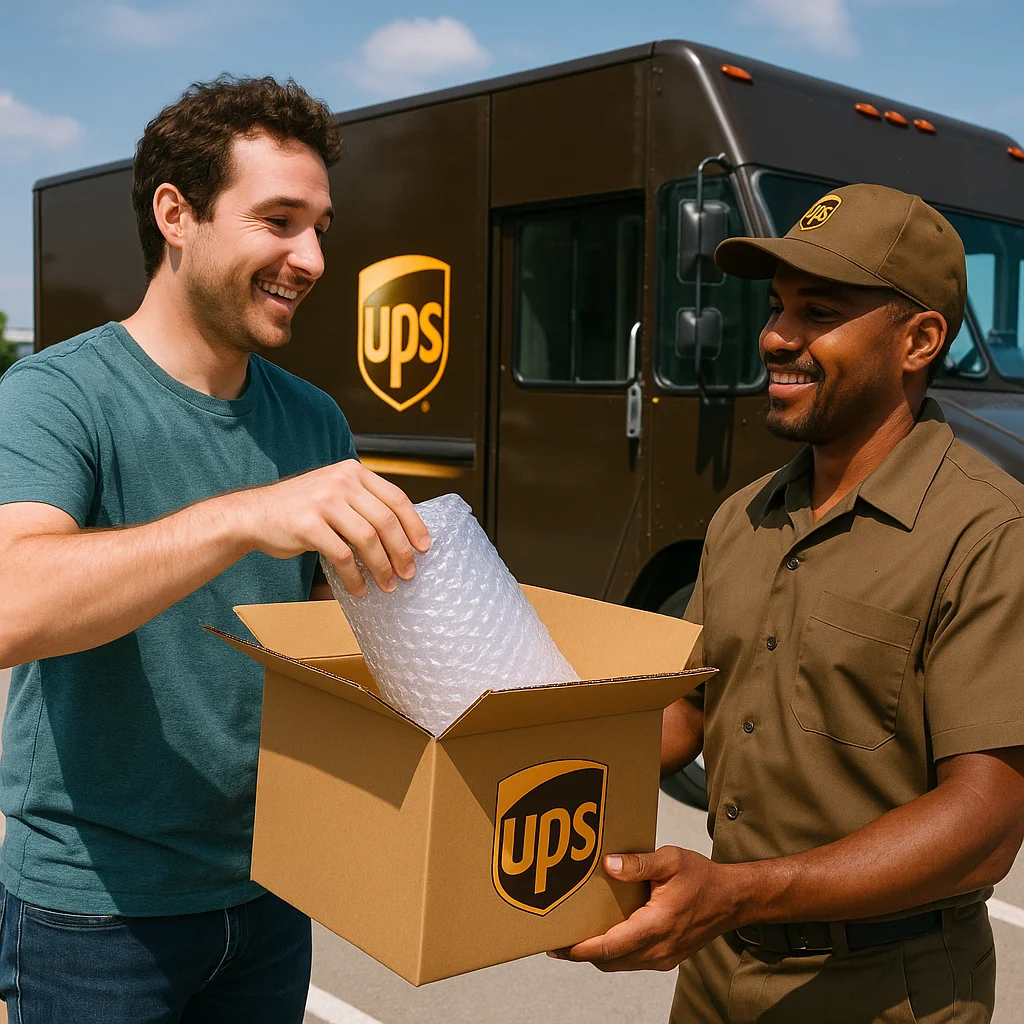
Shipping a Box with UPS
Whether you’re sending a gift to a loved one, fulfilling an online order, or relocating fragile possessions, UPS offers reliable parcel delivery services tailored to a variety of needs. This guide will walk you through everything you need to know-from selecting the right box and packaging materials to preparing labels, choosing service options, and tracking your shipment.
(more…) -

How to Pack a Box for Shipping and Ship Boxes to Another State
Preparing and sending packages across state lines may seem daunting at first, but by following a systematic approach, you can ensure your items arrive safely, on time, and without unexpected fees. This guide covers every step-from selecting the right materials to choosing a carrier and understanding regulations-so you can ship boxes with confidence.
(more…) -

How to Measure Boxes for Shipping
Accurately measuring your box dimensions is crucial for determining shipping costs, ensuring proper handling, and preventing delays or additional fees. This guide covers every aspect of measuring a box for shipping, from understanding why it matters to step-by-step instructions, tips for odd-shaped packages, and practical examples.
(more…) -

Crafting Custom Shipping Boxes
Key takeaway: Custom shipping boxes enhance brand identity, improve product protection, and optimize shipping costs. With the right materials, tools, and techniques, you can design and construct tailored boxes that meet your exact specifications and branding goals.
(more…) -

Getting Free Shipping Boxes
Securing free shipping boxes can dramatically lower packaging costs for e-commerce sellers, small businesses, and individuals alike. Rather than purchasing new boxes, a variety of sources and strategies allow you to obtain sturdy, reliable containers at no cost. The following comprehensive guide will explore:
(more…) -
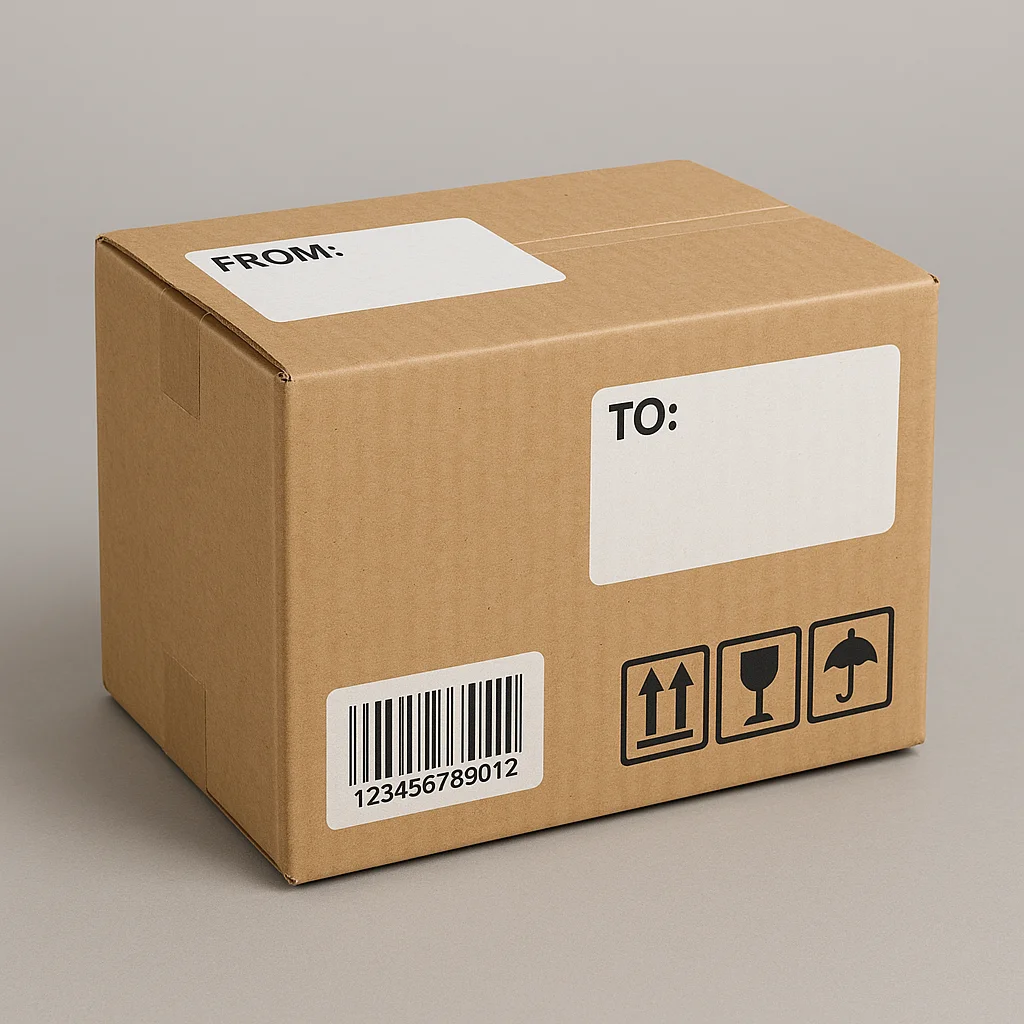
How to Properly Address a Shipping Box
When it comes to shipping items-whether for personal gifts, online orders, or business deliveries-the way you address a shipping box has a direct impact on whether your package arrives safely, on time, and to the correct recipient. A clear, legible, and correctly formatted shipping label helps postal carriers, couriers, and logistics personnel process and route your package efficiently. This guide covers everything you need to know about addressing a box for shipping: from gathering the required information to writing it on the box, choosing the right label, protecting against damage, and complying with carrier-specific guidelines.
(more…) -
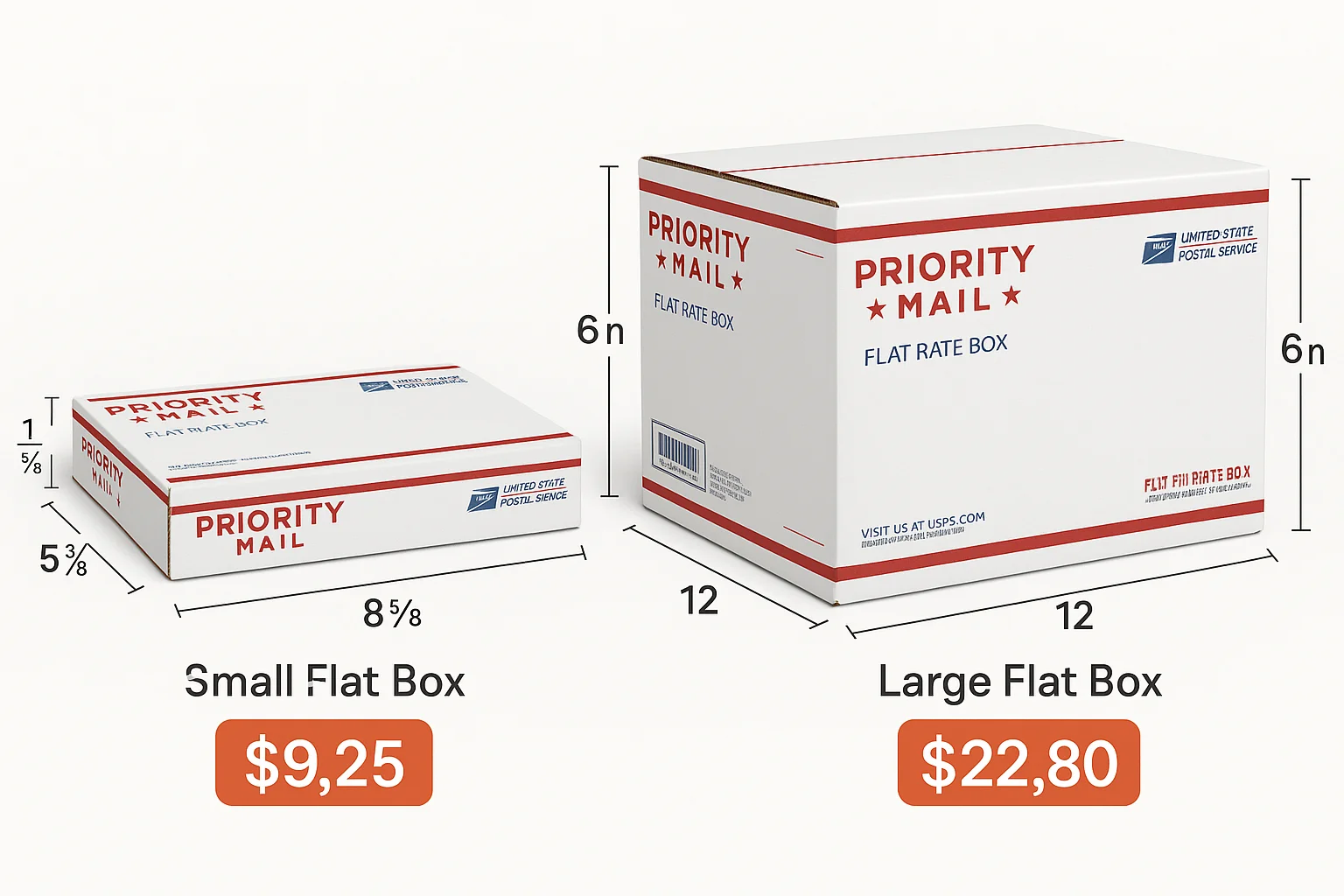
USPS Priority Mail Flat Rate Boxes: Costs, Sizes, and Usage Guide
Key Takeaways
- Large Flat Rate Box: $24.75 retail (up to 70 lb) regardless of weight or distance.
- Small Flat Rate Box: $10.40 retail (up to 70 lb) regardless of weight or distance.
- Flat Rate Envelopes range from $9.85 to $10.60 retail.
- Commercial (online) rates are typically 15–20% lower than retail.
(more…) -
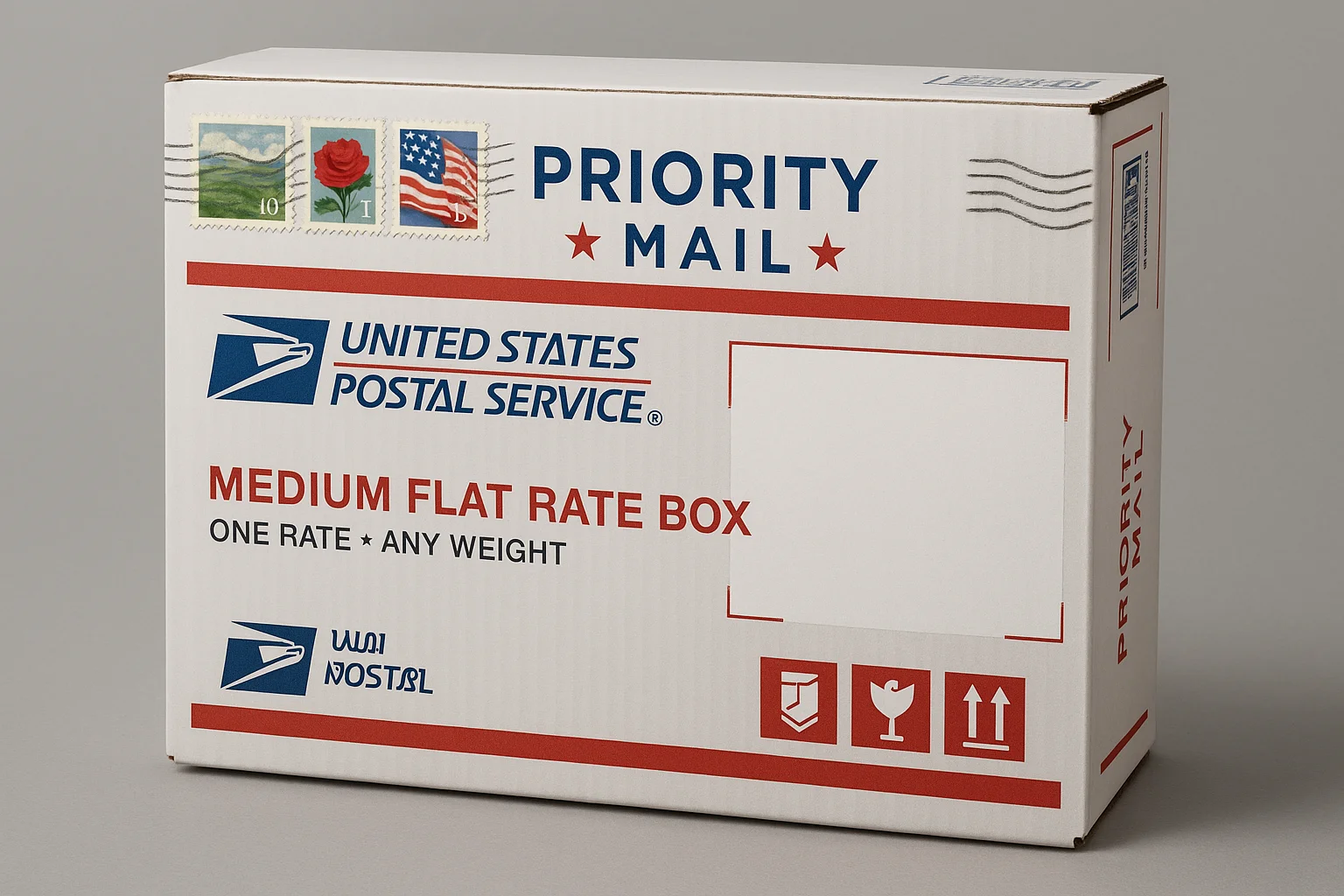
Shipping a Box with USPS
Main Takeaway: For most heavy shipments-including a 40 lb. box-USPS Priority Mail Flat Rate® packaging offers the most predictable, and often the most economical cost. A flat-rate box ships up to 70 lb. anywhere in the U.S. for a single price (e.g., $22.65 retail for a Large Flat Rate Box), avoiding zone-based or per-pound surcharges. When using your own packaging, USPS Ground Advantage™ is generally the cheapest service for non-time-sensitive shipments, while weight-and-zone-based Priority Mail pricing applies for faster delivery in 2–3 business days.
(more…) -
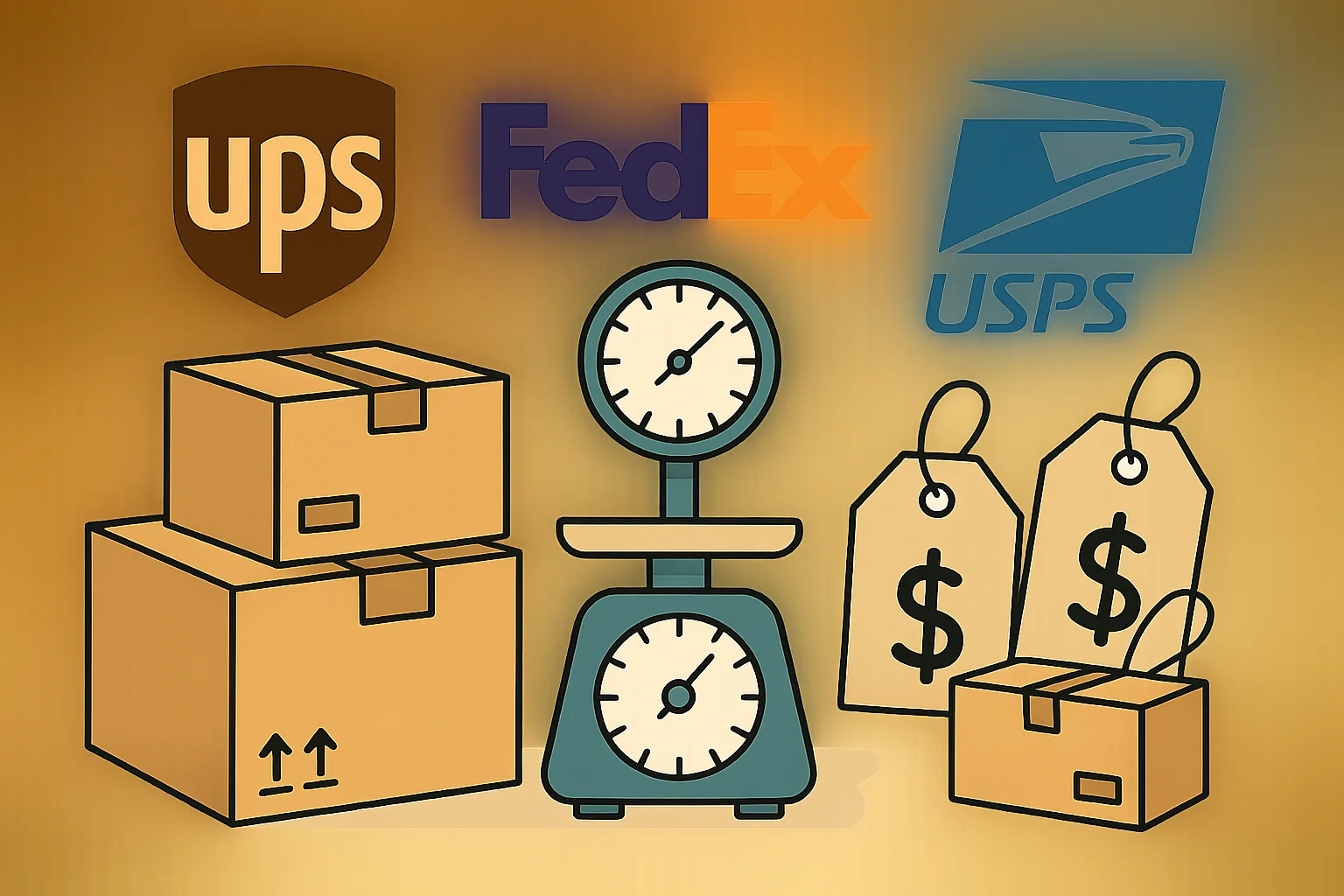
Shipping 20-50 Pound Packages: Costs, Carriers, and Cost-Saving Strategies
Shipping heavier packages between 20-50 pounds presents unique challenges and costs that can significantly impact both businesses and individual shippers. Understanding the various factors that influence shipping costs, comparing carrier options, and implementing cost-saving strategies is essential for making informed shipping decisions.
(more…)

